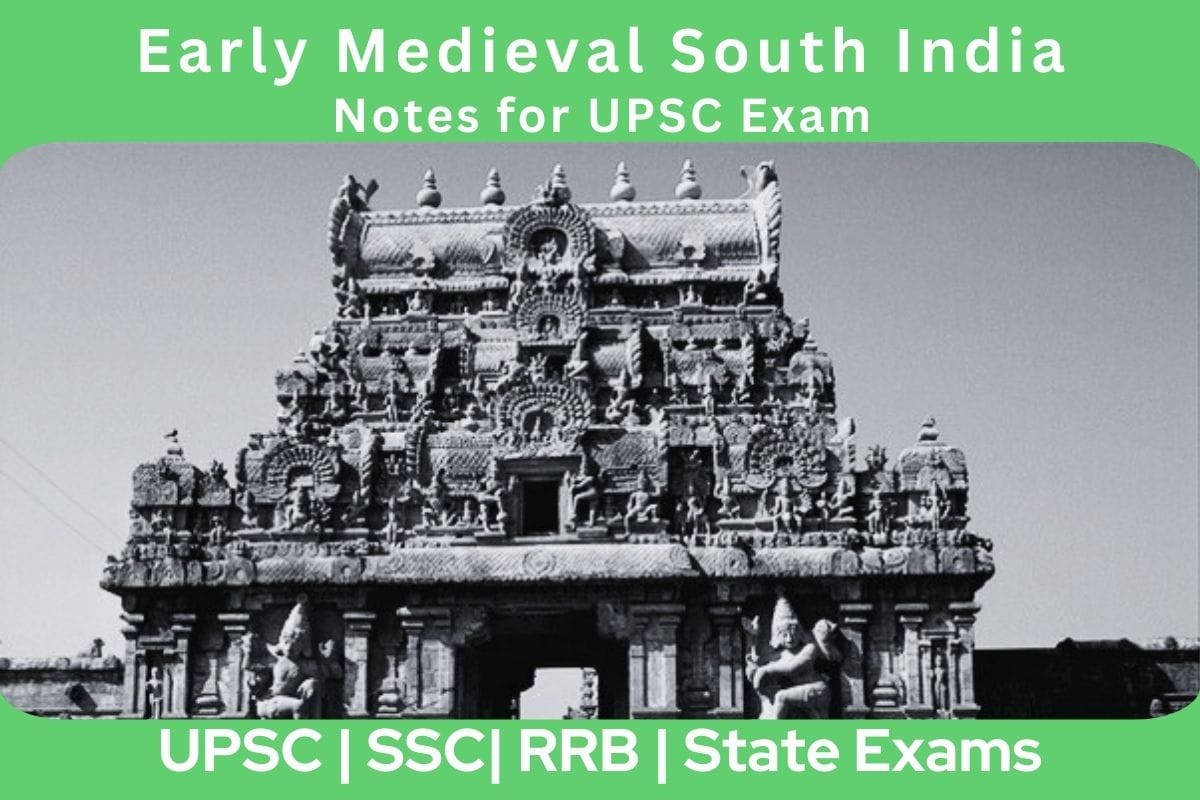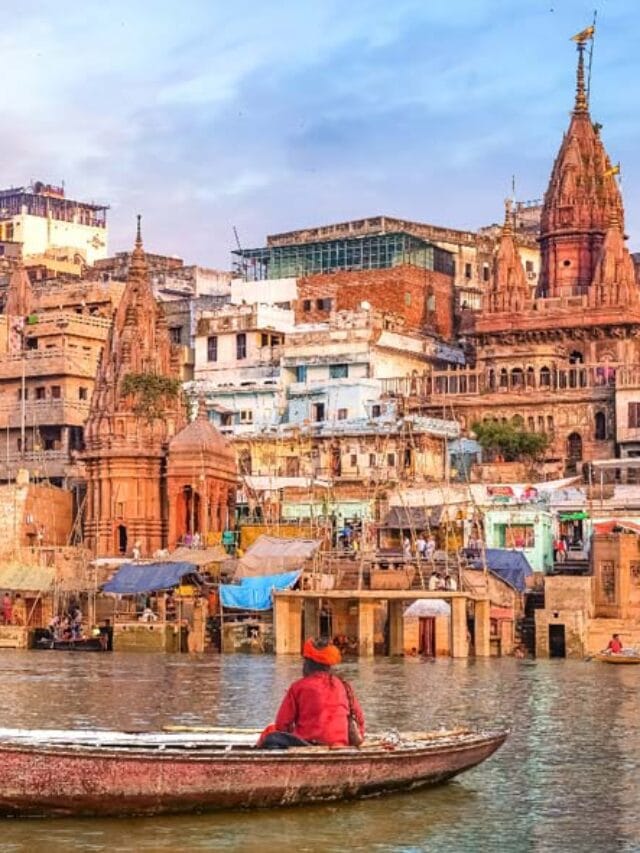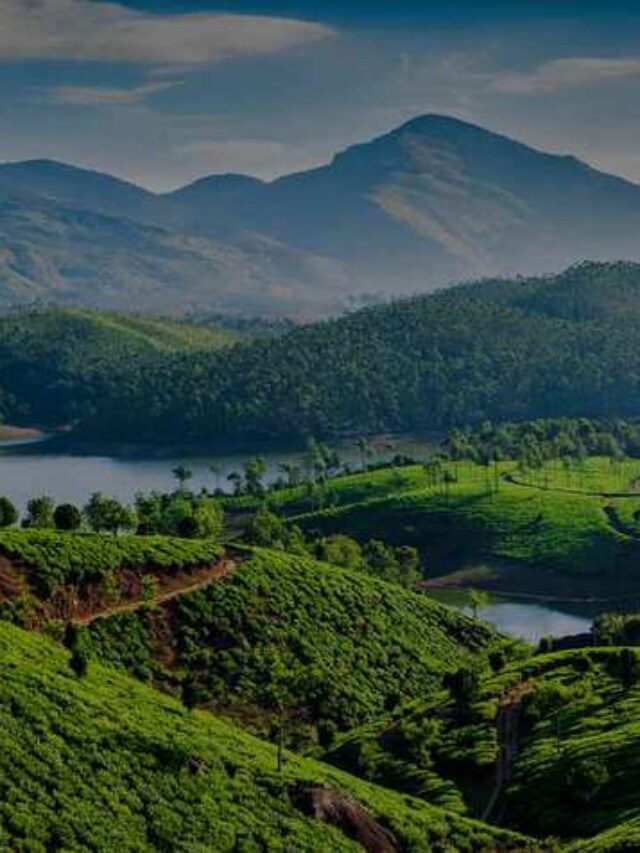
Southern India (c. 600 – 750 CE)
The second historical phase in the regions south of the Vindhyas began around 300 – 750 CE, showing both differences and continuations from the first phase.The topic Early Medieval South India is important for UPSC and other state level exams. Let’s begin.
Important Facts
- The period is divided into First historical phase (c. 200 BCE – 300 CE) Second historical phase (c. 300 – 750 CE)
- Key kingdoms included the Satavahanas, Cholas, Cheras, and Pandyas.
- Significant kingdoms became the Pallavas of Kanchi, the Chalukyas of Badami, and the Pandyas of Madurai.
- The emergence of crafts, trade, coin usage, and numerous towns characterized the first phase. Towns, trade, and coins declined, marking an agrarian economy expansion.
- Extensive Buddhist monuments were present in Andhra Pradesh and Maharashtra during this phase.
- Jainism and Buddhism were indicated in cave inscriptions in the southern parts of Tamil Nadu. Brahmanism became more prominent, with Vedic sacrifices common, and Jainism confined to Karnataka.
- Epigraphs were mainly in Prakrit during this period. Sanskrit became the official language in the peninsular region.
Deccan Region
Western Chalukyas of Badami
- Following the Satavahanas in northern Maharashtra and Vidarbha, the Vakatakas took local control.
- The Vakatakas were succeeded by the Chalukyas of Badami, who emerged in the early 6th century in the western Deccan, playing a significant role in Deccan and south Indian history for approximately two centuries until 757 CE, when they were overthrown by their feudatories, the Rashtrakutas.
- Establishing their capital at Vatapi, modern Badami in the Bijapur district of Karnataka, the Chalukyas of Badami are known as the Western Chalukyas.
- The family of the Western Chalukyas had two branches – the Eastern Chalukyas of Vengi and the Chalukyas of Lata.
- To gain legitimacy and respectability, the Chalukyas claimed Brahman status.
Western Chalukya Dynasty – Important Rulers
Pulakesin I (c. 535 – 566 CE)
- Founder of the Chalukya dynasty.
- Established the kingdom with Vatapi (Badami) as its capital.
Kirtivarman I (c. 566 – 598 CE)
- Son of Pulakesin I, defeated the Mauryas of the Konkan, the Nalas of the Bastar area, and the Kadambas of Banavasi (near Mysore).
Mangalesha (c. 598 – 609 CE)
- After Kirtivarman I’s death, war broke out between his brother Mangalesha and nephew Pulakesin II, with Pulakesin II emerging victorious.
Pulakesin II (c. 610 – 642 CE)
- A significant ruler of the Chalukya dynasty, Pulakesin II left his mark on history.
- The Aihole inscription, crafted by his court poet Ravikirti, showcased his reign in poetic Sanskrit, detailing his victory over the Kadambas of Banavasi.
- The Gangas of Mysore acknowledged his authority.
- Pulakesin II achieved a crucial victory against Harshavardhana, earning the title Dakshinapatheshvara (lord of the south) and thwarting Harsha’s ambitions to conquer the south.
- During his reign, Hsuan Tsang visited and described Pulakesin II as a devout Hindu with tolerance toward other religious sects.
- In a successful first expedition against the Pallavas, Pulakesin II annexed the region known as Vengi, with his brother Vishnuvardhana overseeing the Chalukyas of Vengi.
- However, a subsequent expedition ended in a humiliating defeat near Kanchi, leading to Pulakesin II ‘s demise.
- Badami was occupied by the Pallavas for 13 years, marking a prolonged political conflict between the Chalukyas and the Pallavas.
Vikramaditya I (c. 655 – 680 CE)
- Following Pulakesin II, Vikramaditya I emerged as his successor.
- He successfully ousted the Pallavas from Badami and regained control, capturing Kanchi, the Pallavas’ capital.
Vinayaditya I (c. 680 – 696 CE)
- Not much information is available about Vinayaditya I.
Vijayaditya (c. 696 – 733 CE)
- Ruling for thirty-seven years, Vijayaditya’s era was characterized by significant temple construction.
Vikramaditya II (c. 733 – 743 CE)
- At the peak of the Vatapi dynasty, Vikramaditya II’s reign saw repeated invasions into Tondaimandalam territory and victories over Pallava king Nandivarman II.
- To commemorate his triumph, he had a Kannada inscription engraved on the victory pillar of the Kailasanath temple.
- In 740 CE, he decisively defeated the Pallavas, avenging the earlier humiliation suffered by the Chalukyas at the hands of the Pallavas.
Kirtivarman II (c. 743 – 757 CE)
The final ruler of the Chalukyas, Kirtivarman II, faced defeat at the hands of Dantidurga, the founder of the Rashtrakuta dynasty. This marked the end of Chalukyan rule around 757 CE, with the Rashtrakutas, once Chalukya feudatories, ascending to power.
Chalukyan Art and Architecture
The Chalukyas were enthusiastic supporters of art and architecture, notably contributing to the development of the Vesara style in structural temple construction. However, the Vesara style reached its pinnacle under the Rashtrakutas and the Hoyasalas in the 13th century. The Chalukyan structural temples can be found in Aihole, Badami, and Pattadakal in modern Karnataka. Additionally, the Chalukyas were renowned for their cave temple architecture, seen in Ajanta, Ellora, and Nasik. The Chalukya temples can be categorized into three phases:
The early phase (last quarter of the 6th century):
Three basic cave temples were constructed at Aihole, representing Vedic, Jaina, and Buddhist traditions. This was followed by more advanced cave temples in Badami, including those dedicated to Vedic and Jaina sects.
The second phase:
Notable temples at Aihole include the Ladh Khan temple, Jain temple at Meguti, Durga temple (resembling a Buddha Chaitya), and Huchimalligudi temple. At Badami, the Muktheeswara temple and the Melagutti Sivalaya stand out for their architectural brilliance. A set of four rock-cut temples at Badami showcases exquisite craftsmanship, adorned with beautiful images of gods and humans.
The advanced phase:
This phase features the Pattadakal structural temples, constructed around the 8th century, now recognized as a World Heritage Site. Among the ten temples, four follow the northern Nagara style, and the remaining six adopt the Dravidian style. The Papanatha temple stands out in the northern style, while the Sangameshwara temple and the Virupaksha temple are renowned for their Dravidian style. The Virupaksha temple, modeled after the Kailasanatha temple at Kanchipuram, was commissioned by one of Vikramaditya II’s queens. Sculptors from Kanchi were brought in for its construction.
Explore further details about Chalukyan Architecture in: NCERT Notes on temple architecture and sculpture – Part III.
Eastern Chalukyas of Vengi:
As mentioned earlier, Pulakesin II seized the Vengi region (eastern Deccan) from the Pallavas and appointed his brother Vishnuvardhana as its governor in 624 CE.
Following Pulakesin II’s demise, Vishnuvardhana asserted independence, leading to the rise of the Chalukyas of Vengi or the eastern Chalukyas of Vengi.
Initially, the capital was Vengi, later relocated to Rajamahendravaram (modern Rajamundry).
The eastern Chalukyas of Vengi became a focal point of conflict between the influential Cholas and the western Chalukyas due to their control over the strategic Vengi region.
They governed the region for approximately five centuries, witnessing advancements in Telugu culture, art, poetry, and literature during the latter part of their rule.
Remaining as Chola feudatories until 1189 CE, the kingdom eventually passed into the hands of the Hoysalas and the Yadavas.
MCQs Test on Early Medieval South India








Leave a Reply